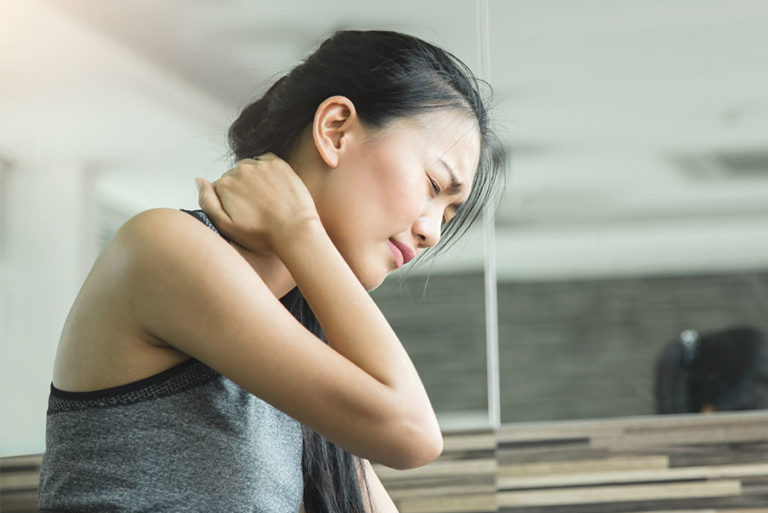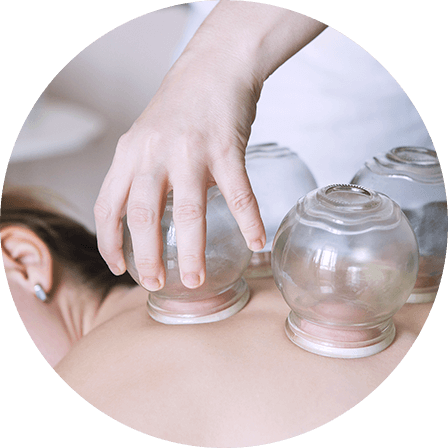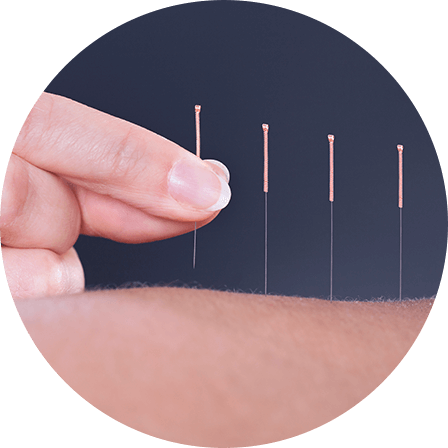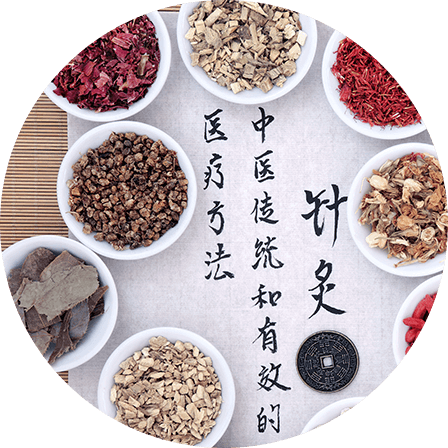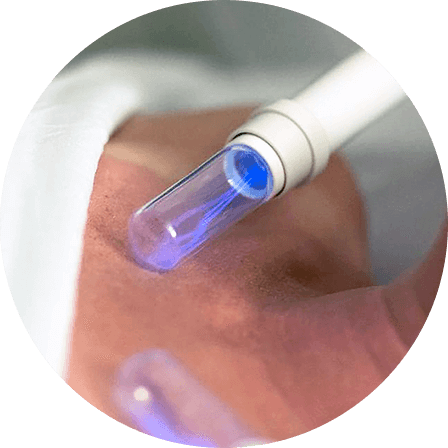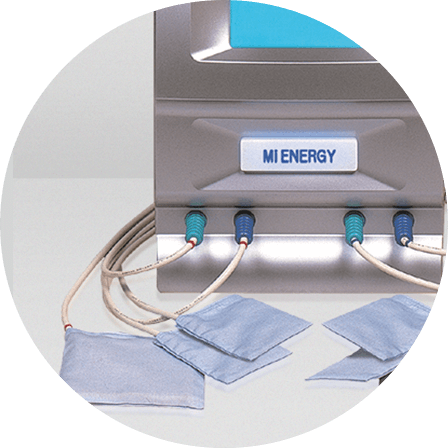Are you suffering from chronic pain?
Chronic pain is defined as pain that lasts or recurs for more than three months. It has been reported that chronic pain affects around 20% of people worldwide. While most people think chronic pain is something that only exists in elderly people, there is a rising trend of our younger population complaining of aches and pain that is persistent and recurrent. These aches and pains are commonly seen in our clinic with patients as young as 21 years old, some in the prime of their life (30s to 40s), and many who are our seniors of the Merdeka and Pioneer generation.
Chronic pain is not gender-specific and non-biased. And while pain can occur in every part of the body, back pain is one of the more common issues that we see in our patients – research has shown that approximately 15% to 30% of adults suffer from back pain each year. [1][2]
As the saying goes: Knowing is half the battle won. Knowing how chronic pain comes about and mitigating the aggravating factors goes a long way in the management of chronic pain. Depending on the age and type of condition, some can even rid themselves of their pain baggage with proper treatment and care.
Traditional Chinese Medicine (TCM) has been backed by much research to be effective in pain management. For example, a National Institutes of Health study on chronic myofascial pain suggests that TCM is safe and frequently efficacious alone or subsequent to standard psycho-social interventions.[3] TCM is widely available and provides patients with an effective, natural form of pain relief therapy.
The following list includes some medical conditions (not exhaustive) commonly associated with chronic pain:
- Headaches
- Sprains
- Joint pain/ Arthritis/ Arthralgia
- Neck and shoulder pain
- Back pain and sciatica
- Tennis elbow (Epicondylitis)
Tightness and pain at the elbow and forearm can result in weakness when gripping - Carpal Tunnel Syndrome
Numbness/pain at the palm and first three and half fingers, with possible tightness and ache at forearm or muscle wastage in the palm if severe - Mechanical back syndrome, Rotator cuff tendonitis
Pain and ache at the neck, back and shoulders can vary among different individuals in area and severity - Trigger finger, DeQuervain’s syndrome/Mother’s thumb
Pain with difficulty when flexing or extending the finger joints; feeling as though fingers are ‘locked’ - Fibromyalgia
- Post-operative pain
- Cancer pain
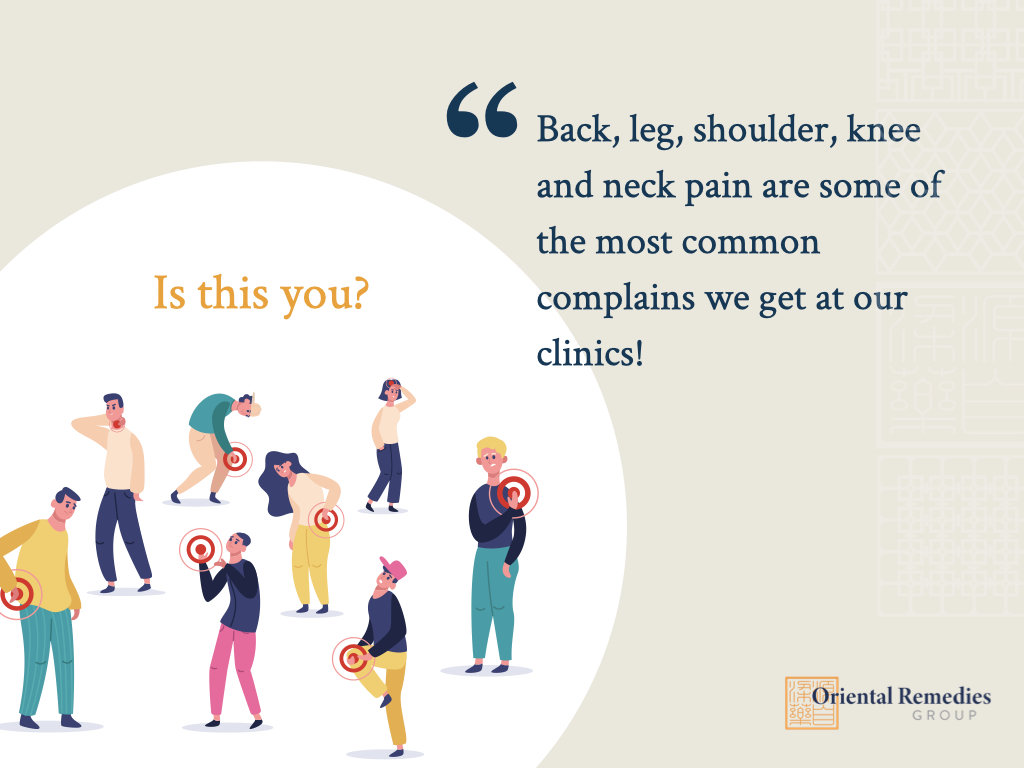
Common causes of chronic pain and pain relief methods
Below are some common causes and methods to relieve chronic musculoskeletal pain from both biomedical and TCM perspectives.
1) Repetitive strain
This usually occurs due to repetitive movements and over-usage of muscles. You can sustain repetitive strain injury when at work, during exercise, doing housework (such as washing dishes, cooking or cleaning the floor), or even at rest (when bending your head down to look at your phone or play mobile games on your tablet). Some of the specific common pains due to repetitive strain include tennis elbow, carpal tunnel syndrome, trigger finger and ‘Mother’s thumb’.
Besides taking pain killers, anti-inflammatory medicine and applying pain relief plasters, those who prefer a gentler, natural approach rather than steroid injections or surgeries achieve good results in their pain management with a combination of TCM and Tech-enhanced treatments – more information on Tech-enhanced treatments are shared below.
2) Poor posture and lack of exercise
Due to many city dwellers’ sedentary and stressful lifestyles, we are often not just in a bad posture, but we are in it for prolonged periods because we are focused on other tasks at hand. When we move and exercise less, the disuse of our bodies leads to a deterioration of many bodily functions. Disuse syndrome has received much attention in relation to back pain problems, chronic pain disorders, and other illnesses. It has been generalized beyond chronic pain problems and some feel it is related to “the base of much human ill-being.”
At work, office workers should always ensure that their sitting postures do not strain their neck, back and wrists. They should take short breaks at roughly 1-hour intervals to prevent stagnation in Qi and Blood, which can result in stiffness and aches. Additional attention should be made to avoid a forward head posture, which is the result of bending over and looking downwards too often (in the case of mobile phone usage). When sleeping, a good pillow of appropriate height and firmness should be used so that neck muscles are relaxed and that the cervical joints are well supported.
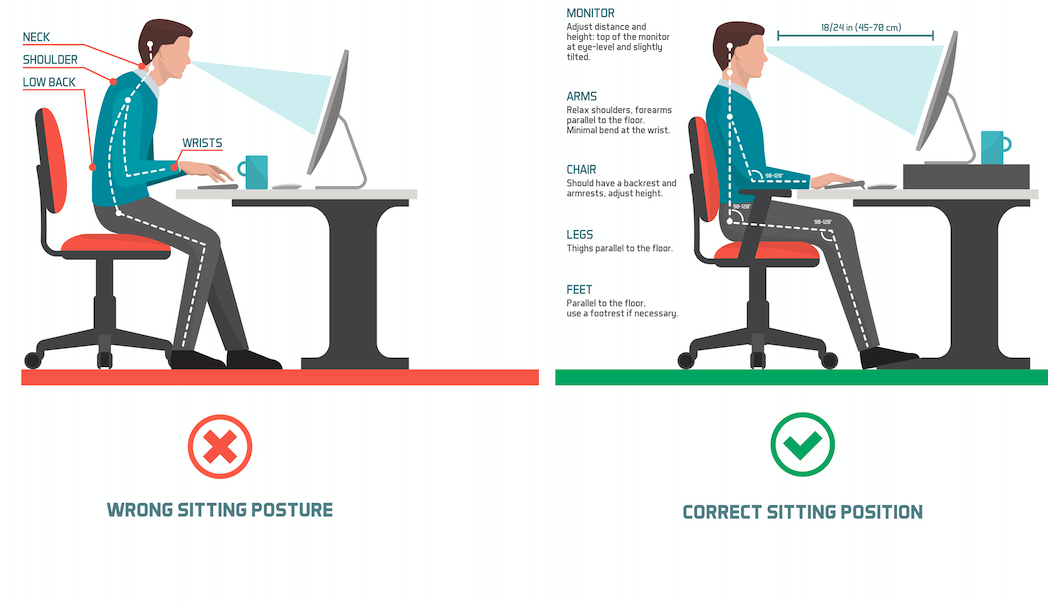
Source: Fairfield Physiotherapy
After a long day of sitting at your desk for work, try engaging in some back exercises that are good for back pain relief. These exercises relieve back muscle tightness, keeping them supple and reduces strain on the back. Do them daily and try to relax while you stretch – you should feel your body loosening and a sense of relief in your back muscles.
| Location | Back exercise for pain relief | |
| Upper back | Chin tuck Sit in a chair with your feet flat on the floor. Your shoulders should be relaxed and down.Now pull your chin in toward your neck. Count to five, then relax. Repeat 10 times. |
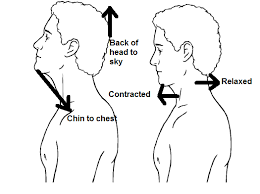 |
| Chest and upper back stretch Clasp your hands behind your back or behind the back of your chair and stretch your chest forward.Slowly lift your head and stretch as far back as possible. Hold for at least 10 seconds. Repeat 5 times. |
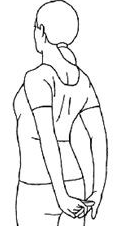 |
|
| Low back | Low back twist Lie down on the ground. Bend your knees with both feet planted on the ground, hip-width apart.Drop your knees to the left as you turn your head to the right. Hold for 10 seconds.Then drop your knees to the right and turn your head to the left. Hold for 10 seconds. Repeat 5 times. |
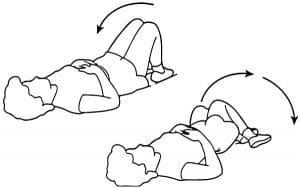 |
3) Energy blockages and exposure to pathogens
From TCM perspective, the body is seen as a holistic whole. This means that pain is the body’s way of signalling a warning alarm. There is a Chinese saying that goes – “不通则痛, 痛则不通” which literally translates to “if there are blockages in your body, you will feel pain.”. If you ignore your body’s warning, akin to ignoring a fire alarm in your house, one can expect serious problems and consequences. More often than not, when we meet with patients with serious conditions, they experienced chronic pain at certain body locations over a prolonged period of time but chose to dismiss it.
Body functions are dependent on the life force energy or Qi. Qi and Blood flow through the meridian network, nourishing body tissues and ensuring optimal body functions. When a meridian is blocked due to pathogens, injury or even excessive emotions, Qi and Blood are unable to move smoothly. As such, the affected area will not be able to get enough blood circulation and nutrients. Thereafter, the patient begins to feel pain, stiffness, bloating and even numbness. Because meridians correspond to specific organs, prolonged blockage of the meridian can affect other parts of the body. Hence, when treating a pain condition, our TCM physician will typically not only focus on the localized pain but more importantly, focus to restore harmony in the whole body.
Prolonged exposure to TCM pathogens such as cold, wind and dampness impedes circulation to affected body parts, which in turn can cause pain, aches, stiffness and cramps. Therefore, avoid blowing a fan directly to the body especially when you are perspiring and feeling hot. Air-conditioning in the room should be kept at around 25 degrees Celsius and any moisture on the body should be wiped off promptly.
You can try DIY acupressure massage at home to help clear blocked energy and relieve your pain. Here are some acupressure points that can help relieve your back pain.
| Pain location | Acupressure point for back pain relief | |
| Shoulder |
|
 |
|
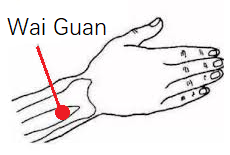 |
|
| Lower back |
|
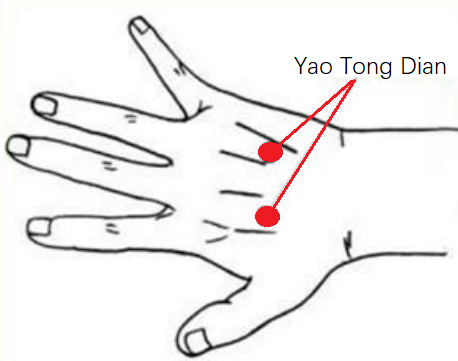 |
4) Poor diet and malnutrition</h3
Most people usually do not associate a poor diet with pain. However, diet and nutrition play an integral part in determining pain from a TCM perspective as well. A body that is malnourished will have weaker muscles that are less resilient and more susceptible to fatigue and injury. Therefore, it is important to have regular eating habits and a well-balanced diet that will be beneficial in strengthening the digestive function and fortifying your fundamental substances such as Qi and Blood.
5) Late-night sleep and insufficient rest
Some of you might have already noticed that insufficient rest or sleeping late causes your muscles to be stiffer and easily strained. It can also cause irritability, dryness in the throat and constipation, which are typical signs and symptoms of Yin deficiency and heatiness.
How can we help patients with chronic pain here at Oriental Remedies Group?
While home remedies like pain relief plaster, stretching, maintaining good posture and acupressure massage can help alleviate your discomfort, chronic pain especially back pains are usually more complicated and will require professional treatment to loosen the knotted fascia and correct spinal misalignment for proper healing to occur.
At Oriental Remedies Group, we use a combination of TCM and Tech-enhanced therapies to relieve pain. These treatments are ideal for those who prefer a gentler, natural approach to pain management. Find out how our treatments can help with pain relief at your back or other affected areas.
Cupping Therapy
Cupping Therapy is commonly used to treat pain, ease scar tissue deep within muscles and connective tissues, and reduce swelling and muscle fascia knots. In a systematic review of 611 studies, cupping therapy has shown positive results on chronic back pain. [4]
“The vacuum produced from cupping causes a localized expansion of the tissue. This facilitates a profound vasodilation reaction to increase circulation/blood flow to painful constricted areas. Increased circulation improves oxygen supply and cell metabolism, which reduces inflammatory (or toxic) substances.”
— Raleigh Harrell, L.Ac
Acupuncture
National Institutes of Health shares that studies suggest that acupuncture may ease types of pain that are often chronic such as low-back pain, neck pain, and osteoarthritis/knee pain. It may help reduce the frequency of tension headaches and prevent migraine headaches as well.
Acupuncture is the insertion of fine, thin needles through the skin at particular acupoints to help stimulate the body and promote self-healing. Acupuncture typically increases Blood circulation to the area, promotes elasticity of muscle fibres and improves muscular contractility. The aim is to clear meridian blockages and correct the imbalances of Yin and Yang within the body so that self-healing can take place. More recently, modern physiologists have put forward the “neural hypothesis” stating that the clinical influence of acupuncture is primarily transmitted through stimulation of sensory nerves that provide signals to the brain, which processes this information and then causes clinical changes associated with treatment. [5]
Coincidentally, it has been clinically observed that acupuncture shows great results for the following pain (perceived by the brain) and disorders relating to the nervous system:
- Pain conditions
Neck, back, shoulder, elbow and other musculoskeletal pain; facial pain, headache, arthritis, abdominal pain, hip and pelvic pain, knee pain, heel pain; sciatica/ other nerve pain and post-surgical pain - Post-stroke rehabilitation
Muscle spasms and spasticity, dysphagia, dysphasia, urinary and faecal† incontinence, anxiety, insomnia, shoulder and arm pain - Neurological disorders
Insomnia, vertigo, Bell’s Palsy/other cranial nerve disorders, mood disorders - Gastrointestinal disorders
Poor appetite, nausea and vomiting, dyspepsia, constipation, reflux, irritable bowel syndrome - Respiratory disorders
Shortness of breath, cough, rhinitis, secretions - Wound management
Pressure sore, post-operative wounds
Herbal Medication & Dietary Changes
One of the most common TCM theories for the origin of pain is that of Qi or Blood stagnation (气滞/血瘀). Hence, herbs with properties to promote Blood circulation and eliminating stasis (活血化瘀药) are often used to nourish joints and facilitate the flow of Qi and Blood. [6] For example, Corydalis (Scientific name: Corydalis yanhusuo/Corydalis ambigua; Chinese name: 延胡索) is a herb used for traumatic injuries and has a good analgesic effect on many types of pain, including chest and gastric pain, as well as menstrual irregularities and dysmenorrhoea. [6]
Electro-Lymphatic Therapy (ELT)
Electro-Lymphatic Drainage Therapy (ELT) is a gentle and non-invasive therapy that helps to stimulate proper flow and drainage of the lymphatic system, simulating the effects of a lymphatic drainage massage or tuina without the pain and pressure. ELT is performed using an FDA-registered wellness device to boost your overall wellness.
Good lymphatic drainage helps with the removal of metabolic wastes, excess water and supports better well-being.
Cell Pro Therapy (CPT)
At Oriental Remedies Group clinics, we use a wellness device (used in Japanese hospitals) known as the MI Energy Machine which directly supplies the body with a high density of negative ions/electrons. Negative ions have been researched to boost your overall well-being.
Your healing is the most important!
In Oriental Remedies Group, we have more than 5 certified bi-lingual TCM Physicians. Each of them has been trained in Nanyang Technological University (Singapore) and China for a minimum of 5-8 years, in both Biomedical Science and TCM before being certified to practice in Singapore. Specifically, we have Physician Yan who specializes in using acupuncture for pain management.
Most chronic pain develop over time, due to various issues and/or injuries that went untreated or were not properly treated. It is therefore important to address any pain in your body promptly and appropriately so that they do not worsen and manifest into an ongoing chronic pain that dampens your quality of life. By combining Traditional Chinese Medicine therapies and expertise with Technology-Enhanced Therapies, we strive to provide the best care possible in your journey with us.
Please contact us at +65 8087 0486 for a personalized consultation.
This article is written by Senior Physician Yan, with contribution from Wellness Blogger Beatrice Liu.
Note: All words in Italics refer to the TCM organ-system and not the anatomical organ referenced in western medicine.
Disclaimer:
The information on this page is for information and educational purposes only. Such medical information may relate to disease, injury, drugs and other treatments, medical devices and/or health products. Medical information does not amount to advice, and if advice is needed an appropriate professional help should be sought. The disclaimer asserts that no warranties or representations are given in respect of the medical information, and that the website operator should not be held liable if a user suffers any injury or loss after relying upon the medical information.
All wellness assessments and technology-enhanced therapies using wellness device(s) are intended for use only for general well-being purposes or to encourage or maintain a healthy lifestyle, and it is not intended to be used for any medical purposes (such as detection, diagnosis, monitoring, management or treatment of any medical condition or disease). Any health-related information provided by these devices should not be treated as a medical advice. Please consult a physician for any medical advice required.
References:
[1] J Occup Med. 2015, 65, 753-757. Neck and upper back pain among eye care professionals. By Al-Juhani, M.A.-M.; Khandekar, R.; Al-Harby, M.; Al-Hassan, A.; Edward, D.P.
[2] Rheumatol. Int. 2019, 39:619-626. Real-world incidence and prevalence of low back pain using routinely collected data. Francis Fatoye; Tadesse Gebrye; Issac Odeyemi.
[3] J Pain. 2012 Nov; 13(11): 1075–1089. Comparative Effectiveness of Traditional Chinese Medicine (TCM) and Psychosocial Care in the Treatment of TMD-associated Chronic Facial Pain. By Cheryl Ritenbaugh, PhD, MPH, Richard Hammerschlag, PhD, Samuel F Dworkin, DDS, PhD, Mikel G Aickin, PhD, Scott D Mist, PhD, MAcOM, Charles Elder, MD, MPH, and Richard E Harris, PhD
[4] Rev Lat Am Enfermagem. 2018; 26: e3094. Cupping therapy and chronic back pain: systematic review and meta-analysis. By Caroline de Castro Moura, Érika de Cássia Lopes Chaves, Ana Carolina Lima Ramos Cardoso, Denismar Alves Nogueira, Hérica Pinheiro Corrêa, and Tânia Couto Machado Chianca
[5] J Acupunct Meridian Stud. 2010 Jun; 3(2): 67-74 Defining Meridians: A Modern Basis of Understanding. By John C.Loghurst
[6] Singapore Med J 2018; 59(5): 230-239. Traditional Chinese medicine: herb-drug interactions with aspirin. By Jia Wei Lim, MBBS, Siow Xian Chee, BSc, BMed, Wen Jun Wong, BMed, Qiu Ling He, BTCM, Tang Ching Lau, MMed

